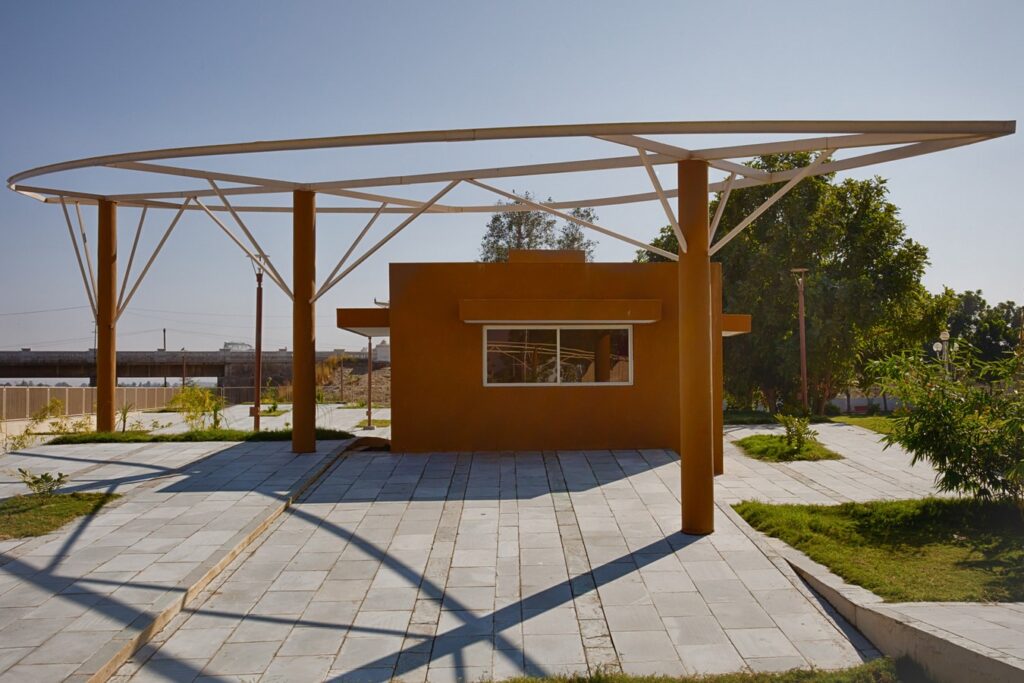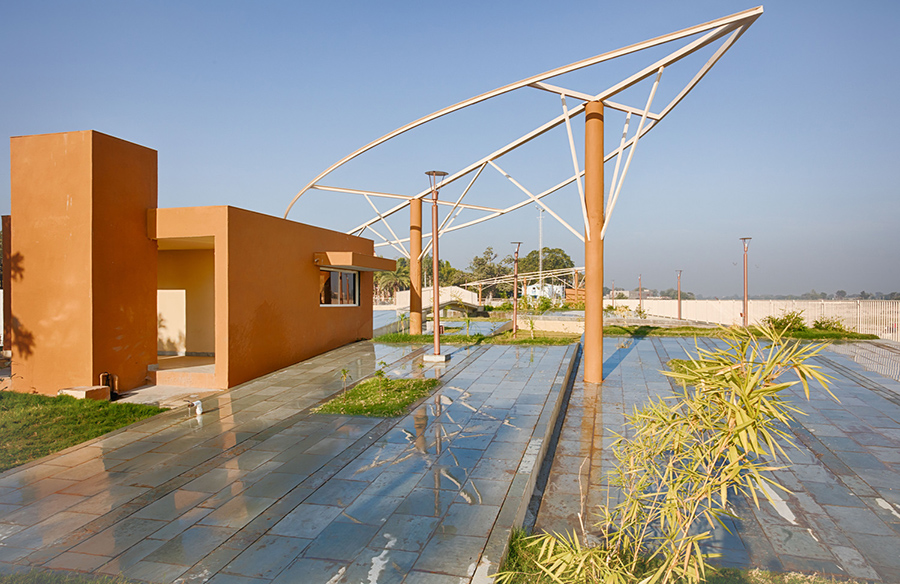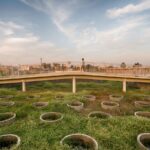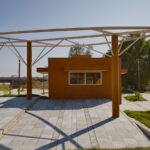Collaborative Endeavor
The Harnav River Edge project is a collaborative effort between two distinguished architectural firms: UA Lab (Urban Architectural Collaborative) based in Ahmedabad, and Keyur Shah & Associates from Himatnagar. Together, they have successfully designed and executed the project within the stipulated time frame and sanctioned budget.

Setting the Scene
Situated in Khedbrahma, a quaint town in Sabarkantha, Gujarat, the project site boasts the confluence of three small rivers, collectively known as Harnav. The municipality of Khedbrahma embarked on a mission to revitalize the river edge by transforming a former dump yard into a vibrant public park. This endeavor aimed to provide the local community with a recreational oasis where they could unwind and connect with nature.

Design Concept
Given the seasonal nature of the Harnav River, with water flowing predominantly during the rainy season, the design prioritized creating recreational spaces that fostered connectivity with the water and its surroundings. Linear pathways were strategically laid parallel to the river edge, offering visitors an immersive experience as they meandered alongside the water’s edge. These pathways, undulating gently to mimic the movement of water, facilitated various activities and engagements along the riverfront.

Dynamic Experiences
The design of the pathways is ingeniously crafted to cater to diverse experiences for visitors of all ages. At certain points, the pathway transitions seamlessly into low-height seating areas, providing opportunities for relaxation and contemplation. As visitors traverse the pathway, it transforms into a bridge spanning a lily pond or widens to accommodate a cafeteria, offering moments of pause amidst the serene landscape. This dynamic interplay of elements ensures that visitors encounter a range of experiences as they explore the river edge.

Sustainable Water Management
A key aspect of the design involves the careful management of water flow along the pathways. Meticulously designed slopes guide the movement of water from one pathway to another, eventually directing it back into the river. Each pathway terminates at a landing, facilitating a smooth transition for visitors while also serving as a runoff point for water movement, ensuring sustainable drainage and maintenance of the site.

Conclusion
The Harnav River Edge project stands as a testament to innovative urban design principles and collaborative efforts aimed at rejuvenating public spaces. By seamlessly integrating recreational amenities with natural elements, the project not only enhances the aesthetic appeal of the riverfront but also fosters community engagement and environmental stewardship.
















